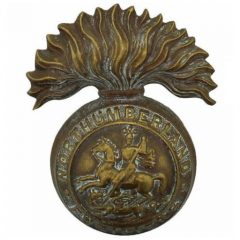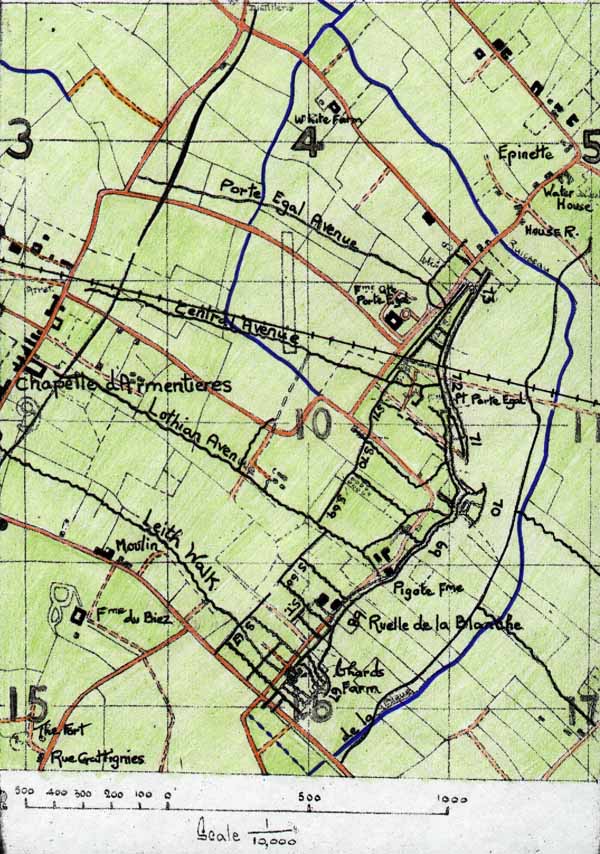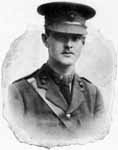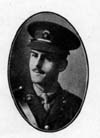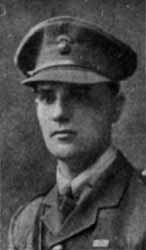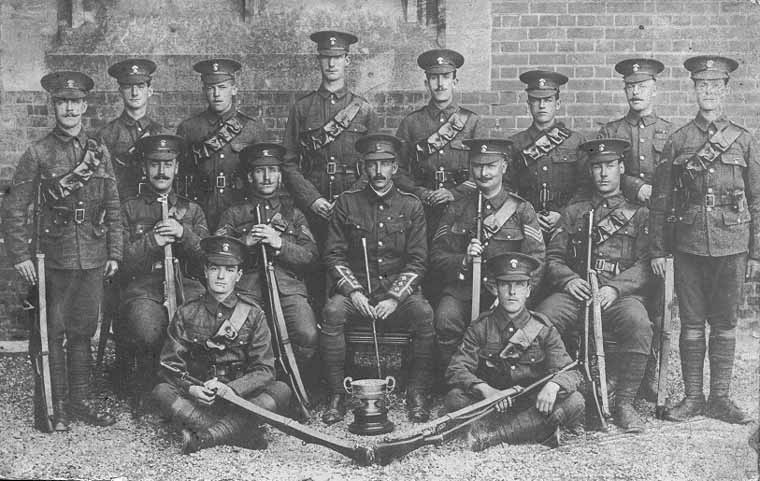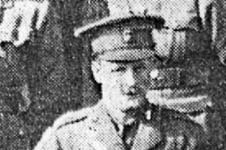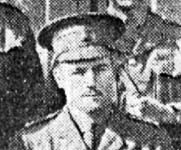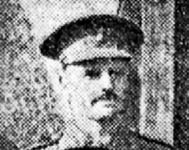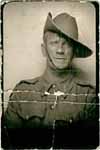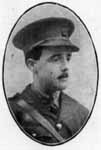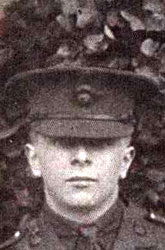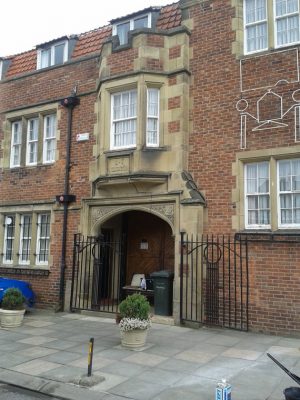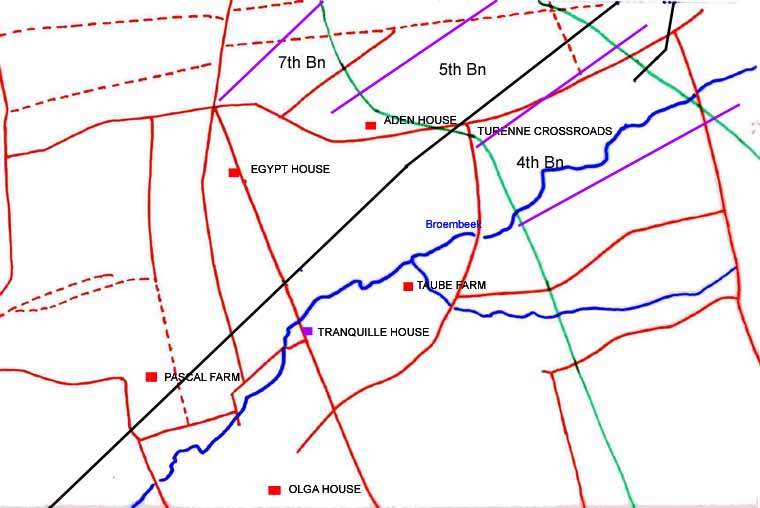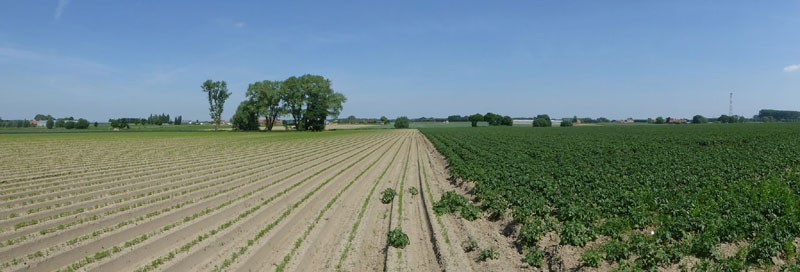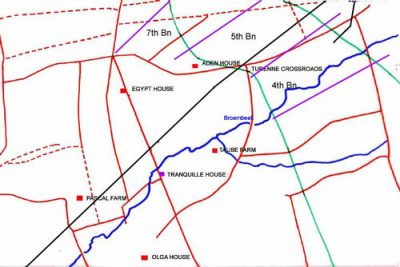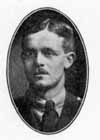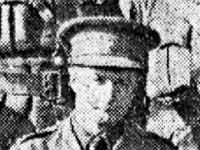1st , 2nd & 3rd February 1917
Early in Feb rumours circulated that in a little while the Divn was to take over a portion of the French Line. Operation Orders were issued on the 7th stating that on the nights of the 13th/14th and 14th/15th the 50th Divn was to relieve the 35th and 36th French Divns in front of Belloy en Santerre1 and Berny en Santerre2 . This was part of a gradual extension of the British Front southwards as far as a point opposite the town of Roye3 . (50th Divn)
DERNANCOURT
Bn continued to train as on previous days. A party was detailed to proceed to Rue Des Illieux, Albert to fix up bathing apparatus for the whole Bde. In spite of pipes being frozen the majority of the men were bathed.
4th & 5th Feb
Training continued. Coys were practised in musketry on range allotted to us.
6th Febuary 1917
GOC 149th Infantry Bde inspected the Bn in full marching order.
7th February 1917
Lt T.A.L Thompson returned from leave on the 4th Feb 1917 and resumed duties of acting Adjt. Capt C Stephenson also returned from leave. 2nd Lt W.C Clemitson and seventeen men rejoined from base.
8th February 1917
At 9am the Bn marched off for Mericourt Sur Somme. Progress was very slow on account of having to halt whilst the Divn Train Transport, 2nd Field Ambulance and 446th Field Coy RE caught up with the rest of the column. Route lay via Buire Crossroads4, Ville Morlancourt5, Chipilly6, Cerissy7, Morcourt8and Mericourt Sur Somme9. Bn was billeted in houses and farms around Mericourt. The remainder of the Bde were billeted in large huts in vicinity of village. The intense cold prevailed. An enemy aeroplane flew over about 10.30pm and dropped bombs.
9th February 1917
Coys exercised in Coy drill.
10th February 1917
The Bn marched seven miles via Chuignolles and Chuignes to Bois Touffu. Dugout accommodation was found for the whole Bn.
BELLOY
11th February 1917
2nd Lt T Bonner was the recipient of the Croix de Guerre.
7pm Relieved 123rd Regt (French)
The ground was frozen hard on the 12th of Feb. The trenches occupied by the 4th Bn were in good condition although there were no revettments. At 6pm, ‘D’ Coy moved up in close support to the 7th Bn.
Work. Latrines and sanitary arrangements improved, and trenches cleaned.
Enemy artillery quiet during day and night, village occasionally shelled with 5.9’s.
No casualties
13th February 1917
Trenches and dugouts cleaned, and draining commenced in Boyau Bouchet. Enemy artillery shelled village area N 21 A occasionally with 5.9’s
7pm ‘D’ Coy returned to this sector.
14th February 1917
The trenches were cleaned, but, because the ground was frozen revetting could not start, but material was carried up to Argonne Trench and Bouchot Trench in preparation for when the thaw commenced.
11am to 1pm Area N21 A behind village heavily shelled with 5.9s and occasionally during day and night. 'C' Coy cookhouse blown in.
6pm ‘C’ Coy moved up in support of the 5th Bn in Trench De Hures.
15th February 1917
At 8am work and preparations for revetting Communication Trench No8 commenced l' Argonne Trench10 and Bouchot Trench11. Work continued throughout day, and carried by two parties of fifty from 6th Bn at night. One hundred yards in each trench, sides sloped and 2ft berm about sixty yards each.
Shelling of area N21 A desultory during daytime increasing towards midnight. Ten gas shells were sent over and fell near the junction of Trench De Parc12 and Bouchot. At 4pm a French bomb stores (near dump) at N21 C 80 exploded causing casualties, and a fire amongst RE material, which took until 4am the following morning to extinguish. One man killed and six wounded.
16th February 1917
On the 16th work continued on Argonne and Bouchot trenches and carried on at night-time by two parties from the 6th Bn. More material carried up ready for use ‘C’ Coy commenced work on Boyau II Bis sloping sides, materials carried up from Belloy for their use. Gas shells and 5.9s fell in Belloy during day and night. Much aerial activity and good observation. Casualties – One man wounded.
At 8am work continued on Argonne and Bouchot trenches, about 300 to 350 yards in each trench done with about 150 yards 2ft berm dug. The work was continued by two parties from the 6th Bn at night.
Boyau II Bis. 'C' Coy worked on this, sides sloped, duckboards repaired and laid.
The following RE material carried up from Belloy to Argonne and Bouchot. 800 long pickets, 15 coils wire, 50 sheets expanded metal and 100 trench boards. Our trenches now show signs of falling in owing to thaw. Gas and 5.9s shells fell occasionally in village day and night.
7pm to 12pm Enemy machine guns fired bursts of fire evidently intended for dump, bullets fell near PC Gaudy from direction Barleux.
18th February 1917
Argonne Trench 50 yards revetted 200 yards cleared of mud. Channels cut under duckboards.
Bouchot Trench 60 feet revetted
Trench de Hures 70 yards one side revetted
Marchal Trench 50 wooden stakes driven in
Boyau 2 Bis 200 yards relaid, 50 yards new duckboards laid
Trench du Parc Channels out under duckboards draining
Materials carried up to various trenches for work. Two rolls of rabbit wire, 100 x 6’ posts, 68 pickets, 34 duckboards, 170 pickets, 50 duckboards, 27 trenchboards.
11.30am Activity occasionally shelling in area. Heavy shelling between 11.30am and noon near junction Souville and Bouchot Trench with 5.9s and 4.2s HE and shrapnel.
Two men wounded.
19th February 1917
N34A to T.4A
At 8pm the Bn relieved the 5th Bn. Three Coys moved into the front line and one in support.
8am Work continued on Argonne, Bouchot and Marchal trenches. Thirty yards of revetting were carried out in Trench des Hures, Boyau 2 Bis. Activity occasional shelling Bouchot trench near junction Souville.
20th February 1917
Majority of the communication trenches in almost impassable condition, over knee deep in places. Left sector better. Carrying sent to dump for pump and duckboards. Commenced pumping Trench Martin.
Enemy heavily shelled vicinity of junction B Damloup and Trench Marchal with 5.9s between 9.30 & 10.30am also N33 D central occasionally. Two patrols sent out from the left and centre Coys reported that the ground was very soft and greasy, enemy sentries were thirty yards apart and that our wire in good condition.
Work on the trenches continued on the 21st, left Coy sector much improved, reconnoitred overland route to PC Hedevaux, wire and tape laid. The work of the centre and right Coys was delayed owing to having to clear trenches. Twenty-six trench boards were laid in Specel trench, four hand pumps were carried from Hedevaux to B Damloup. Our 18-pounder guns fired on enemy wire from 2pm until dusk. Two patrols from the centre and right Coys reconnoitred the enemy wire. A sap was discovered towards our lines finishing at T4A97. German wire extended from T4A91 to T4A83 and then to T4A85, and practically untouched Sap showed signs of heavy shelling two feet of water.
Enemy artillery shelled Annamites trench with 5.9s all day at retaliation, also Marchal trench junction with Danloup.
At 7.35pm and 8.30pm there was a short barrage on above trenches. Fish tails 40 fired in ravine 9pm and occasionally machine gun fire. Fish tails 40 fired Annamites trench.
22nd February 1917
The trenches were much improved with the continuing cleaning and pumping out. The communication trenches were still bad; laid six hundred yards of duckboard from N27C95 to N33B05 on the overland route. Twenty yards of Marchal trench were cleared and trench boards laid. Bridge erected over Trench Des Hures13 for overland route, twenty yards of Specel trench14 cleared and trench boards laid. From 1pm our Howitzers and 18-pounders were firing on the enemys’ wire.
Two patrols went out from right and centre Coys at midnight. ‘D’ Coy reported that while going along Sap T4A87, they had discovered a machine gun position at T4A83. Rifle grenades T4B28. Two rows French wire in front of our Specel trench and Couldur trench. One patrol from ‘B’ Coy left N34D11 enemy wire intact. Patrol worked fifty yards north wire very thick. Enemy listening post noted at N34D60, enemy post discovered at N34D93.
Enemy artillery was very quiet. Shelled and trench mortared Annamites trench occasionally at night. Machine gun fires on road N33D central. Enemy has two barrage lines 100 yards west of Annamites trench15, Marchal trench16 and Danloup17 trench.
On the 23rd work continued on clearing and pumping out the trenches, while two hundred more duckboards were laid on an overland track. The communication trenches were still waterlogged. Our Howitzers and 18-pounders on wire all day on enemy wire at points T4B04 N34D81/2 61/2 T4B16. Between midnight and 3am, five patrols were sent out and gaps ten yards wide were found in the wire at T4B04 and T4B16. The existence of sap T4A87 and a machine gun post at T4A83 were confirmed. Listening post suspected N34D60 and post at N34D73
Enemy artillery was quiet during the day but at 7.55pm enemy opened barrage on our front line, intense machine gun and trench mortar fire. Night very dark and communication with centre Coy was cut, they called for artillery retaliation in case of attack by enemy, by sending up an SOS which was repeated from headquarters. Our artillery opened barrage 30 seconds after SOS sent up and enemy fire soon died out about 8.20pm. Slight trench mortar activity during night also machine gun fire. One man killed and two wounded. (1 accidentally).
24th February 1917
Cleaning and draining work continued on all trenches, dugouts and posts in the sector. 95 duckboards laid on new track. Bridge built over trench N33D1.3. Our artillery continued to cut enemy wire at N34D8.6 with good results. Three patrols out report wire at T4B04 gap is ten yards wide, but wire 1’ high. Lamp signalling from Cyprus Road reported at 6.30pm.
Enemy attitude very active keen sniping many trench mortars and rifle grenades on Annamites trench, report little shelling except light barrage on Annamites trench at 8pm to 8.15pm
About thirty 5.9s about area N33, B33. One man wounded.
25th to 26th February 1917
On the 25th Divn HQ received the startling information that the enemy had begun to retire; he had evacuated Pys, north west of Le Sars, that morning. At night a further message stated that the British had occupied Pys, Irles and Serre. The German Retreat to the Hindenburg Line had begun. The 50th Divn, however, was not desperate to follow up the enemy as he fell back to his well prepared defences in the Hindenburg Line, for it was after the Divn had been relieved early in March, that he evacuated his defences south of the Somme
6am to 6am Work on the trenches, posts and dugouts continued. Specel Crabe, Calmon and Marchal trenches where left Coy are now in good condition. Communication Trenches still bad in places. Patrolling all night done by Coys, enemy front line, held by sentry groups thirty yards apart, very nervous, occasional bursts of machine gun fire.
6.30pm to 7.30 enemy trench mortared Annamites trench retaliation by artillery silenced him again repeated at 5.30am, 26th Feb.
Enemy artillery very quiet, occasional field guns on Annamites and only four 5.9s. Three German aeroplanes seen over our lines, two returning towards Horny. Duckboard track, length done now from N27C54 to N33D64.
27th February 1917
28th February 1917
On the 1st of March Divn HQ reported that on the nights of the 6th, 7th, 8th of March, the 59th Divn would relieve the 50th Divn.
FOUCAUCOURT
Working party of eight groups consisting of one NCO and eight men each was provided by the Bn to erect wire entanglements for the support line. The 149th Bde was tasked with erecting a two-mile length. 2nd Lt Emery MF is in charge of this party. Coys reorganised and refitted in the morning and were inspected by the CO in the afternoon.
2nd March 1917
The same strength of working party was sent out for wiring. The remainder of the Bn commenced training, and had baths at Bos St Martin.
3rd March 1917
All ranks available in the Bn were equipped out with the small box respirator and passed through a gas chamber to test their respirators. The rest of the day was devoted to completing the equipment and clothing of the Bn. The wiring party consisting of the same number of NCOs and men was sent out again.
4th March 1917
The usual working party found – Bn. Church parade 10am. Brigadier General Ovens inspected the Bn in billets at 3pm. Operation orders issued 7pm for move on following day.
On the 5th March, the relief of the 50th Divn by the 59th Divn began and continued until the 9th. The 149th Bde at this time was based in the Warfusee area. At 9am on that day the Bn paraded in full marching order and marched the seven miles to Bayonvillers via the main Amiens road. Hut encampment was taken over and occupied at Bayonvillers. In the aft Coys inspections took place.
6th March 1917
BAYONVILLERS
Bn parade Arm drill and hair
Route marches. Afternoon - Coy inspections.
7th March 1917
Routine same as previous day – Afternoon devoted to attention of feet of ‘A’ & ‘B’. Coys Inspection and hot bathing treatment.
8th March 1917
The days routine was the same as on the 6th and 7th - Feet inspection and treatment for remainder of Bn operation orders for proceeding day issued.
On the 9th of March the Bn paraded at 8.45am in full marching order and marched the two miles to Warfusee Abancourt and took over billets of 7th SF, No 2 area being occupied. The camp was composed of huts was very incomplete. Material (RE) was indented for and work was commenced immediately on latrines and cookhouse sheds.
10th March 1917
11.30am
Training and early morning parades at Warfusee commenced. Bn parade and inspections were carried out after camp and equipment etc had been thoroughly cleaned. Close order drill practised. Afternoon - Coy inspection took place.
Brigadier General Rees DSO took command of the 149th Bde on this date.
11th March 1917
10.30am Church parade service. Coy inspections after parade service in Bde canteen. Bde recreational training scheme was put in practise from this date the inter-Coy football matches commencing.
12th March 1917
9.30am Bn parade. Organisation of Coys and platoons into sections of specialists commenced from this date. The whole morning was devoted to specialist training. - Coy inspections and recreational training took place in the afternoon. Gallows for bayonet fighting practise and competitions was commenced.
13th March 1917
The days routine was the same as on the 12th. Officers lecture at Bde canteen 6pm.
14th March 1917
Routine and training as on day previous.
15th March 1917
A large working party of 250 men was assembled at 9am for work in the village from 9am under the orders of the town major. Only Lewis gun instructions was able to be continued on this day.
Specialist training continued after Coy parades on the 16th. Recreational training took the form of platoon cross country running races and football.
On the 17th March the Divn received information that the enemy had begun to withdraw from his position opposite the III Corps front.
Specialist training continued during the morning as on previous days. Afternoon Coy inspections and football match – 1st round of the inter-battalion rounds took place, the 4th Bn playing the Army Service Corps.
18th March 1917
Coy inspections during morning.
2.15pm Church parade service in Bde canteen.
19th March 1917
9.30am Bn parade. Specialist Training continued except for one Coy, which did a practical scheme of platoon attack etc. Lecture by Brigadier General to Officers and NCOs of Bde at 5.30pm in Bde amusement hut.
Training continued on the 20th, two Coys doing general training and the two remaining Coys being out, one on a route march with practise of Artillery formation upon deployment; the other doing a practical open warfare scheme.
21st March 1917
Routine as on previous day, with two Coys on a short march and practising deployment and march discipline etc.
6pm Lecture by OC to officers and NCOs (senior) on practise of open order work and deployment.
Training and routine as on previous day with general training of the two Coys that were marching the previous day, the other two Coys going for a short march and practising deployment and march discipline etc.
6pm Lecture to officers and senior NCOs by Bde bombing officer on rifle grenade work in open warfare etc.
22nd March 1917
9.30am Bn parade and inspection by the GOC 50th Divn General Wilkinson. Field day followed, the Bn going out on a route march. Deploying and advancing from artillery formation.
2.30pm Coy inspections
6pm Lecture for officers and NCOs by Major Robb.
23rd March 1917
8.30 Bn parade – field day – an open order attack practised from the main Warfusee-Villers Carbonnel road to the south east side of Bore D’achiel, a position being taken up and consolidated on high ground overlooking Hamel.
Coy inspections were held at 2pm on the 24th. At 5pm Capt Dixon delivered a lecture to the officers and NCOs. ‘D’ Coy proceeded on a Coy training scheme, ‘B’ and ‘C’ Coys carried out general training. ‘A’ Coy and during the morning another Coys attended the baths at Warfusee.
On the 25th March orders from Fourth Army HQ instructed the Divn to concentrate in the Talmas- Villers Bocage- Molliens area by March 31st.
Coy inspections during the morning – Roman Catholic and Non-Conformist Church parade
Church of England parade service in Recreation Hut (Bde) at 2.15pm. Afternoon Bde cross country runs as teams under arrangement of Lt Stiles from the T.M.B.
6.15pm Lecture by CO to officers.
26th March 1917
The Divn Field day was cancelled due to the bad weather. Morning was spent in giving lectures in the huts and attending to interior economy. Daily inspections and clothing parade in the afternoon.
Two NCOs and 28 men sent as a working party to RTO Warfusee for unloading supplies.
27th March 1917
Field firing exercise carried out by the Bn in the morning between Hamel and Warfusee, unfortunately ‘Sammy’ the regimental pet was killed during the firing.
A working party of two NCOs and 28 men was provided by the Bn for RTO Warfusee for unloading supplies.
At 6pm Major W Robb MC lectured to all officers, Warrant Officers and Sgts on consolidation.
At 9.45am on the 28th the 149th Bde was inspected by the III Corps Cdr - Lt Gen Sir W.P Pulteney KCB, KCMG, DSO. The Bn marched past and then proceeded on a route march via Cerisy with practise of deployment.
At 7.30pm the Bn practised a night attack on the ground between Warfusse and Hamel
29th March 1917
9.30am The CO inspected all Coys in fighting order during the morning.
The Somme 1917 - Military Units
50th (Northumbrian) Division - Consisted of the 149th (Northumberland) Bde, 150th (York & Durham) Bde and 151st (Durham Light Infantry (DLI)) Bde.
The 149th Bde was comprised of the 1/4th, 1/5th, 1/6th and 1/7th Bn - Northumberland Fusiliers.
The 150th Bde was comprised 1/4th Bn - East Yorkshires, 1/4th Bn - Green Howards, 1/5th - Bn Green Howards and 1/5th Bn - Durham Light Infantry.
The 151st Bde was comprised the 1/6th, 1/8th, 1/9th Bn - DLI and 1/5th (Cumberland) Bn - Border Regt.
1st Northumbria Field Coy RE
179th Tunnelling Coy RE
446th Field Coy RE
59th Division - Consisted of the 176th, 177th and 178th Bde.
The 176th (2nd Staffordshire) Bde was comprised of the 2/5th and 2/6th Bn - South Staffordshire Regt. 2/5th and 2/6th Bn - North Staffordshire Regt
The 177th (2nd Lincolnshire and Leicestershire) Bde was of comprised 2/4th and 2/5th Bn - Lincolnshire Regt. 2/4th and 2/5th Bn - Leicestershire Regt.
The 178th (2nd Notts and Derby) Bde was comprised of the 2/5th, 2/6th, 2/7th and 2/8th Bn - Sherwood Foresters (Nottinghamshire & Derbyshire Regt).
Bibliography
[zotpress items="4R6FADJ9" style="harvard1"]
